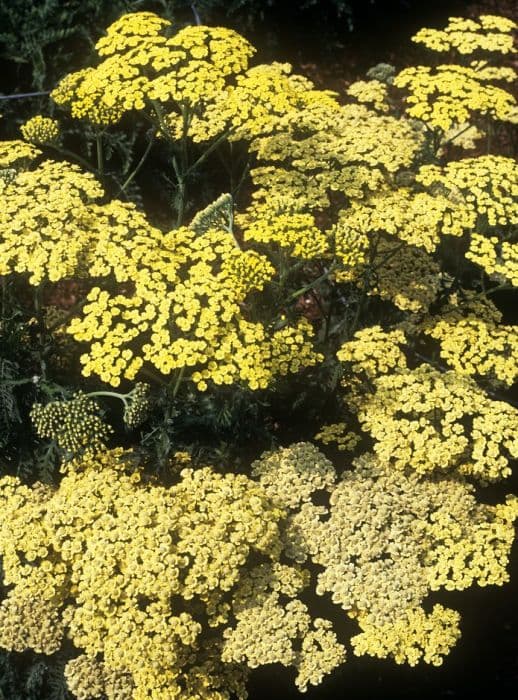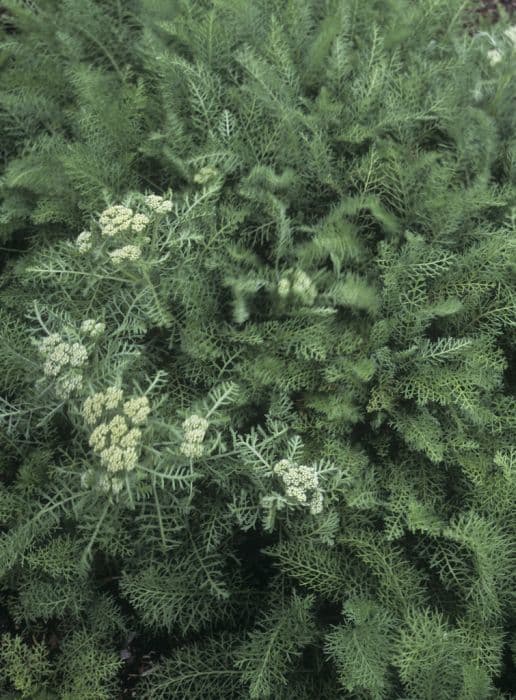Globe Thistle Echinops sphaerocephalus

ABOUT
Echinops sphaerocephalus, commonly known as the great globe thistle, is a striking perennial plant known for its unique spherical flower heads. These flower heads are comprised of tightly clustered tiny blue or violet florets that form a globe-like shape, giving it its distinctive appearance and common name. The flower heads are borne atop grayish-green stems that are accented with spiny, deeply lobed leaves. The leaves themselves have a rough texture due to a prickly surface, and their color is typically a deep green with a whitish underside caused by a fine layer of hairs. Despite its spiky defense, the great globe thistle is popular among gardeners and nature enthusiasts for its bold, architectural form and its ability to attract pollinators such as bees and butterflies when in bloom.
About this plant
 Names
NamesFamily
Asteraceae.
Synonyms
Globe Thistle, Great Globe Thistle, Pale Globe-Thistle.
Common names
Echinops exaltatus, Echinops gmelinii, Echinops ritro, Echinops sphaerocephalus var. albidus, Echinops sphaerocephalus var. albus, Echinops sphaerocephalus subsp. albidus, Echinops sphaerocephalus var. gmelinii, Echinops sphaerocephalachus, Echinops sphaerocephalus var. sibiricus, Echinops sphaerocephalus var. sphaerocephalus, Echinops sphaerocephalus var. sterilis, Echinops sphaerocephalus subsp. sphaerocephalus.
 Toxicity
ToxicityTo humans
Echinops sphaerocephalus, commonly known as the great globe thistle, is not widely reported as a toxic plant to humans. There are no well-documented cases of poisoning or severe adverse effects from ingesting this plant. Nonetheless, some individuals may experience mild irritation or an allergic reaction if they handle the plant and then touch their eyes or sensitive skin. As with many plants, it is advisable to exercise caution and avoid ingestion since individual reactions can vary and the potential for toxicity in large amounts or in sensitive individuals is not fully understood.
To pets
Great globe thistle, the common name for Echinops sphaerocephalus, is also not widely known to be toxic to pets. While the plant is not typically listed as a poisonous species, caution is still encouraged as animals can sometimes have unexpected reactions to non-toxic plants. Ingesting large quantities could potentially cause mild gastrointestinal upset, but documented cases of pet poisoning from this plant are rare or non-existent. Owners should still monitor their pets to prevent them from eating this plant as individual sensitivities could potentially lead to adverse reactions.
 Characteristics
CharacteristicsLife cycle
Perennials
Foliage type
Deciduous
Color of leaves
Green
Flower color
Blue
Height
3-4 feet (0.9-1.2 meters)
Spread
2-3 feet (0.6-0.9 meters)
Plant type
Herb
Hardiness zones
3
Native area
Europe
Benefits
 General Benefits
General Benefits- Aesthetic appeal: Echinops sphaerocephalus, also known as Globe Thistle, adds visual interest to gardens with its spherical blue flower heads and textured foliage.
- Attracts pollinators: The plant is known for attracting bees, butterflies, and other beneficial insects, which help pollinate other plants in the garden.
- Drought resistance: Globe Thistle is known for its ability to withstand dry conditions, making it a good choice for xeriscaping and water-wise gardens.
- Deer resistance: The prickly texture of the foliage makes it less appealing to deer, which can help protect other more vulnerable plants in the garden.
- Low maintenance: Once established, the Globe Thistle requires minimal care, making it suitable for gardeners looking for low-effort plants.
- Winter interest: The dried flower heads of Echinops sphaerocephalus can be left standing to provide visual interest and structure during the winter months.
- Cutting garden: The flowers make excellent cut flowers for bouquets and are also suitable for dried flower arrangements due to their unique shape and lasting quality.
- Cultural significance: In some cultures, Globe Thistle is used in traditional garden design, serving as a symbol of strength and protection.
- Soil adaptability: The plant adapts well to various soil types, although it prefers well-drained soil, making it versatile for different garden designs.
- Long blooming: Echinops sphaerocephalus has a long flowering season, usually from mid-summer to early fall, providing a lengthy display of color and form.
 Medical Properties
Medical Properties- Anti-inflammatory: Echinops sphaerocephalus may possess compounds that help reduce inflammation in the body.
- Antipyretic: The plant has been traditionally used to lower fever in some cultures.
- Hepatoprotective: It might have properties that protect the liver from damage, although scientific evidence is limited.
- Antimicrobial: Some studies suggest that the plant has the ability to inhibit the growth of certain bacteria and fungi.
 Air-purifying Qualities
Air-purifying QualitiesThis plant is not specifically known for air purifying qualities.
 Other Uses
Other Uses- Echinops sphaerocephalus, commonly known as Globe thistle, can be used as a natural dye, providing a color range from grays to dark greens depending on the mordant used.
- The dried flower heads of the Globe thistle make attractive additions to floral arrangements or dried bouquets, providing texture and interest.
- The stems of Globe thistle can be used in paper making, providing a source of fiber for specialty or artisanal papers.
- Gardeners may use the plant as a means of controlling soil erosion, thanks to its deep rooting system that helps stabilize the soil.
- The Globe thistle, being quite resilient, is often planted in urban landscaping projects to provide greenery in challenging growing conditions.
- Beekeepers may plant Globe thistles nearby as they are excellent at attracting bees, thus promoting pollination in the area.
- It can be used in companion planting schemes to deter certain pests that do not favor its spiky foliage and strong-smelling leaves.
- The Globe thistle's striking spherical blue or violet flower heads can be used as inspiration for artists and designers in various fields like textiles and graphics.
- Due to its architectural form, Globe thistle can serve as a natural sculptural element in garden design.
- Photographers may use Globe thistle as a subject for practicing macro photography, capturing the intricate details of its spiky blooms.
Interesting Facts
 Feng Shui
Feng ShuiThe Globe thistle is not used in Feng Shui practice.
 Zodiac Sign Compitability
Zodiac Sign CompitabilityThe Globe thistle is not used in astrology practice.
 Plant Symbolism
Plant Symbolism- Uniqueness: Echinops sphaerocephalus, commonly known as globe thistle, features striking globular blue flower heads that exude a sense of individuality and uniqueness, symbolizing the celebration of one's distinct characteristics.
- Attraction: Globe thistle is known to attract bees and butterflies, symbolizing allure and the ability to draw others in with one's presence and energy.
- Protection: With its spiky foliage and resilient nature, the globe thistle can symbolize protection and defense, reflecting the idea of safeguarding oneself or others from harm.
- Independence: The hardy and self-sufficient nature of this plant represents independence, perfect for symbolizing the strength and ability to stand alone without need for external support.
 Water
WaterGlobe thistle should be watered deeply but infrequently to encourage deep root development. During the growing season, water the plant once a week with approximately 1 to 1.5 gallons of water, tapering off as the plant becomes established. In hot and dry conditions, you may need to water more frequently, while in cooler or rainy periods, less water may be necessary. Ensure that the soil is well-draining and does not remain waterlogged, as globe thistle does not like to be in constantly moist soil. During the winter months, watering can be reduced significantly, as the plant is dormant during this time.
 Light
LightGlobe thistle thrives best in full sun conditions, requiring at least six hours of direct sunlight each day to perform well and produce its characteristic blooms. The ideal spot for planting globe thistle is in an area that receives unobstructed sunlight throughout the day. Partial shade is acceptable, but too much shade can result in a weaker and less vigorous plant.
 Temperature
TemperatureGlobe thistle is hardy and can survive in a wide range of temperatures; however, it grows best in areas with average temperatures between 60°F and 75°F. It can tolerate cold down to about -20°F and thrives in areas where the temperature does not exceed 90°F for prolonged periods. The ideal conditions for globe thistle are moderate temperatures with cool nights, ensuring vigorous growth and blooming.
 Pruning
PruningPruning globe thistle is mainly done to remove spent flower heads, which can encourage a second bloom or prevent the plant from self-seeding too prolifically. Deadheading the flowers after they have bloomed and faded can be done throughout the growing season. Additionally, cutting back the foliage in late autumn or early spring can help maintain a tidy plant appearance and encourage robust new growth.
 Cleaning
CleaningAs needed
 Soil
SoilGlobe thistle thrives in well-draining soil with a pH range of 6.0 to 7.5. A mix of garden soil, compost, and sharp sand or perlite makes an ideal blend for this plant. Ensure adequate organic matter for fertility.
 Repotting
RepottingGlobe thistles typically don't need frequent repotting and can be repotted every 2-3 years or when they outgrow their current container. They prefer not to be disturbed often.
 Humidity & Misting
Humidity & MistingGlobe thistle is tolerant of a range of humidity levels and does well in average ambient humidity. It does not require any special humidity adjustments.
 Suitable locations
Suitable locationsIndoor
Use well-draining soil, place in full sun, don't overwater.
Outdoor
Plant in full sun, well-draining soil, and space adequately.
Hardiness zone
3-8 USDA.
 Life cycle
Life cycleEchinops sphaerocephalus, commonly known as the Great Globe Thistle, typically follows a perennial life cycle starting with seed germination, which requires a period of cold stratification to break dormancy. The seeds sprout in spring, growing into a rosette of spiny, silver-green leaves. In its second year, the plant develops a sturdy, upright stem and produces spherical flower heads with steel-blue blooms in mid to late summer, which are attractive to pollinators like bees and butterflies. After flowering, the plant sets seeds that are dispersed by wind or animals. In the fall, the above-ground parts of the Great Globe Thistle die back, but the root system remains alive, entering a period of dormancy during the winter months. The following spring, the plant will regrow from its roots, starting the cycle anew.
 Propogation
PropogationPropogation time
Late spring to early summer
Echinops sphaerocephalus, commonly known as Great Globe Thistle, is often propagated by seed. The best time to propagate by seed is in late winter to early spring. Sow the seeds in a well-draining soil mix, covering them lightly with soil as they need light for germination. Maintain the soil moisture until germination, which typically occurs in two to three weeks at temperatures around 65 to 70 degrees Fahrenheit (18 to 21 degrees Celsius). Once the seedlings have developed their first set of true leaves, they can be transplanted into individual pots and eventually moved into the garden when they are strong enough and the danger of frost has passed.









